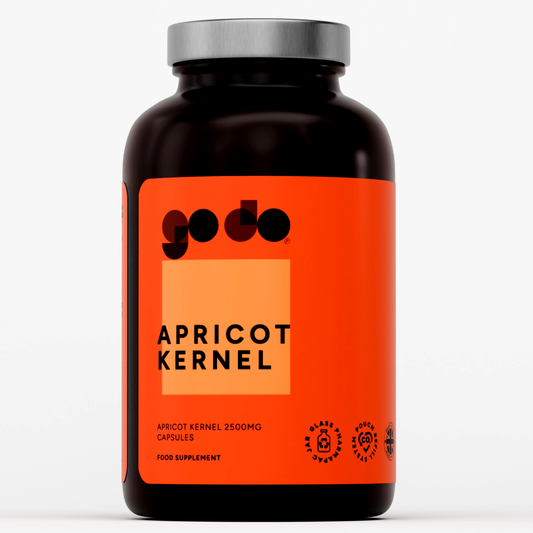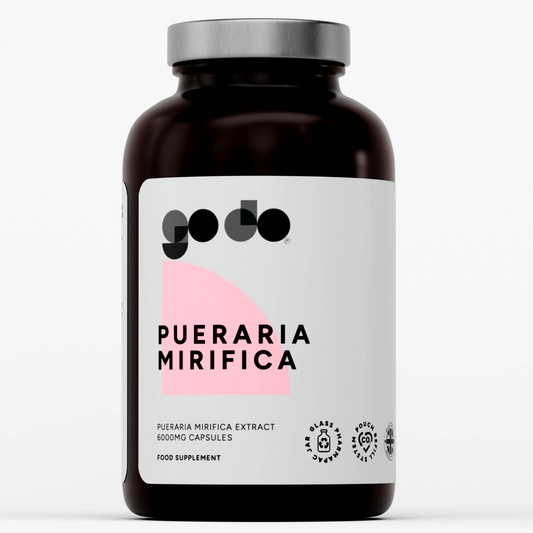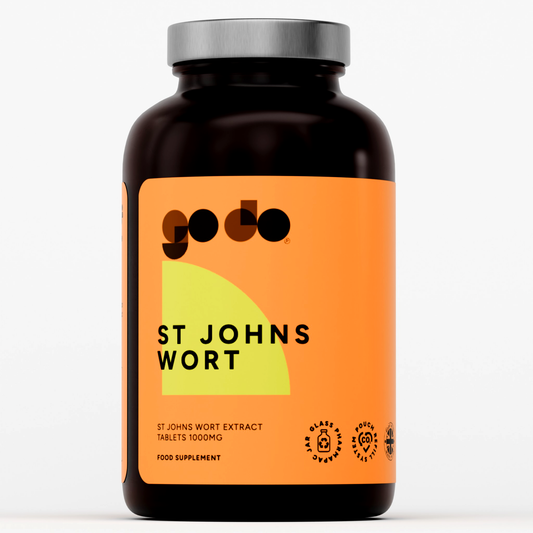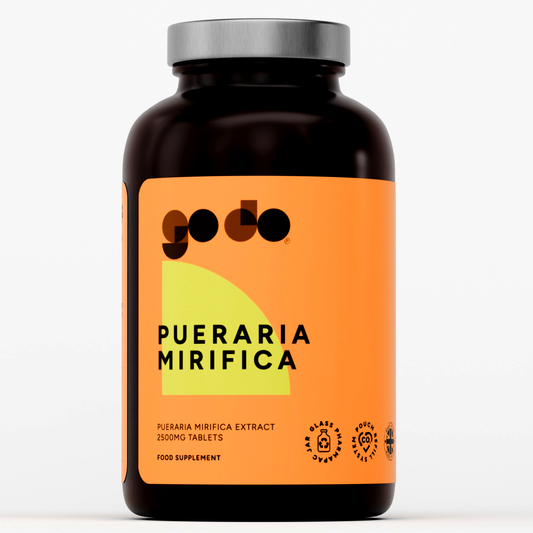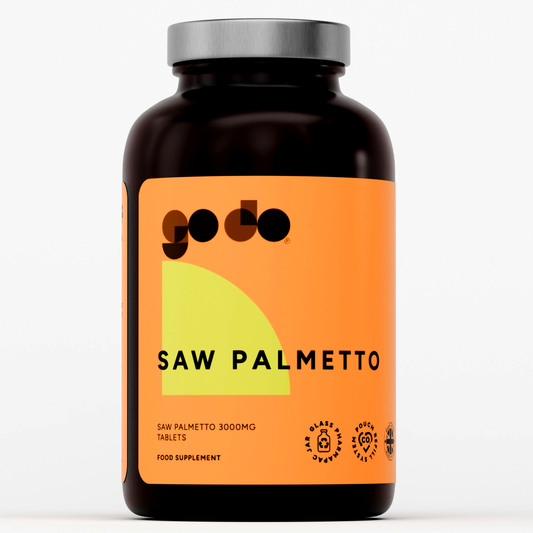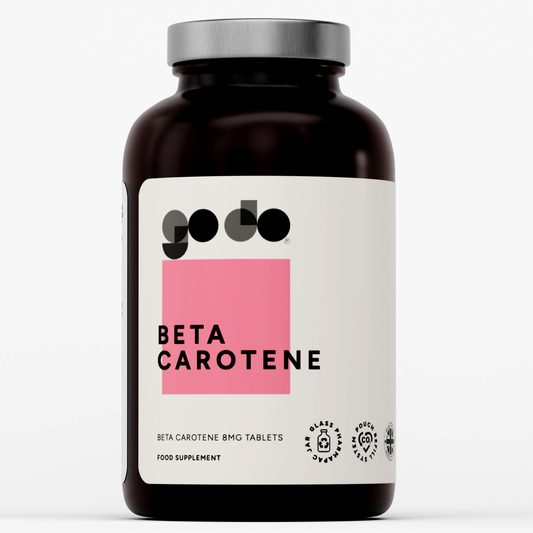Understanding Hot Flashes and Night Sweats
Hot flashes and night sweats represent two of the most common and disruptive symptoms experienced during menopause, affecting up to 85% of women during this transitional period. These vasomotor symptoms occur when the body's temperature regulation system becomes unstable due to declining estrogen levels, leading to sudden episodes of intense heat, sweating, and discomfort that can significantly impact quality of life.
The physiological mechanism behind hot flashes involves the hypothalamus, the brain's temperature control center, which becomes hypersensitive to small changes in core body temperature during menopause. When estrogen levels fluctuate or decline, the hypothalamus incorrectly perceives the body as overheating and triggers rapid vasodilation and sweating to cool down, resulting in the characteristic sensation of intense heat spreading throughout the body.
Night sweats are essentially hot flashes that occur during sleep, often causing women to wake up drenched in perspiration and requiring clothing or bedding changes. These nocturnal episodes can disrupt sleep patterns, leading to fatigue, mood changes, and decreased cognitive function the following day, creating a cascade of health and wellness challenges.
The duration and frequency of hot flashes vary significantly among women, with some experiencing mild, infrequent episodes while others endure severe, frequent symptoms that can occur dozens of times per day. Factors influencing symptom severity include genetics, lifestyle factors, body composition, stress levels, and dietary choices, making personalized management approaches essential for optimal symptom control.
Understanding the relationship between diet and vasomotor symptoms provides an important foundation for developing effective management strategies. While hormonal changes remain the primary driver of hot flashes and night sweats, certain foods and beverages can act as triggers that precipitate or worsen these symptoms, making dietary modifications a valuable tool for symptom management.
The Science Behind Food-Triggered Vasomotor Symptoms
Thermoregulation and Dietary Influences
The human body's thermoregulation system involves complex interactions between the nervous system, circulatory system, and various hormones that work together to maintain core body temperature within a narrow range. During menopause, declining estrogen levels disrupt this delicate balance, creating a state where the thermoregulatory system becomes hyperresponsive to various stimuli, including dietary factors.
Certain foods and beverages can influence body temperature through multiple mechanisms, including direct thermogenic effects, alterations in blood flow patterns, and changes in neurotransmitter activity that affect the hypothalamus. When consumed by women already experiencing hormonal instability, these dietary factors can tip the sensitive balance toward triggering a hot flash episode.
The concept of dietary thermogenesis explains how certain foods require more energy to digest, absorb, and metabolize, potentially raising core body temperature slightly. While this increase is typically minimal and well-tolerated by most people, women experiencing menopause may have reduced tolerance for even small temperature fluctuations, making them more susceptible to food-triggered symptoms.
Vasodilation, the widening of blood vessels that characterizes hot flash episodes, can be influenced by various dietary compounds that affect blood vessel function. Some foods contain compounds that directly cause blood vessels to dilate, while others may influence the production of nitric oxide or other molecules that regulate vascular tone, potentially triggering or exacerbating hot flash symptoms.
Individual variations in metabolism, genetics, and sensitivity to specific compounds mean that food triggers can be highly personal. What triggers severe symptoms in one woman may have no effect on another, emphasizing the importance of identifying individual trigger patterns through careful observation and potentially keeping a symptom and food diary.

Neurotransmitter and Hormone Interactions
The relationship between diet and hot flashes extends beyond simple temperature effects to include complex interactions with neurotransmitter systems and hormone pathways. Certain foods can influence the production, release, or activity of neurotransmitters like serotonin, norepinephrine, and dopamine, which play roles in temperature regulation and may affect hot flash frequency and severity.
Serotonin, in particular, has been implicated in hot flash mechanisms, with research suggesting that alterations in serotonin signaling may contribute to the development of vasomotor symptoms. Foods that affect serotonin levels or receptor activity could potentially influence hot flash patterns, though the exact relationships remain complex and not fully understood.
The gut-brain axis represents another important pathway through which dietary choices may influence hot flash symptoms. The gastrointestinal tract contains extensive neural networks that communicate with the brain, and certain foods may trigger responses that ultimately affect temperature regulation centers in the hypothalamus.
Inflammatory responses triggered by certain foods may also contribute to hot flash symptoms, as inflammation can affect hormone balance and neurotransmitter function. Foods that promote inflammation might exacerbate the underlying instability that makes women susceptible to vasomotor symptoms during menopause.

Spicy Foods and Thermogenic Compounds
Capsaicin and Heat-Generating Spices
Spicy foods containing capsaicin, the active compound in chili peppers, represent one of the most commonly reported dietary triggers for hot flashes and night sweats. Capsaicin works by binding to temperature-sensitive receptors in the mouth and throat, creating a sensation of heat and triggering physiological responses designed to cool the body, including sweating and vasodilation.
The mechanism by which capsaicin triggers hot flashes involves activation of TRPV1 receptors, which are part of the body's heat detection system. When these receptors are stimulated, they send signals to the brain indicating increased temperature, prompting the hypothalamus to initiate cooling responses that mirror those seen in hot flash episodes.
For women already experiencing hormonal instability during menopause, the additional thermal stress from spicy foods can overwhelm the already compromised temperature regulation system, leading to intense hot flash episodes that may be more severe and longer-lasting than those triggered by hormonal fluctuations alone.
Common spicy foods that may trigger symptoms include hot peppers, hot sauces, spicy curries, wasabi, horseradish, and dishes containing significant amounts of black pepper, cayenne, or other heat-generating spices. The intensity of the response often correlates with the level of spiciness, though individual sensitivity varies significantly.
Some women find that they can tolerate mild spices but must avoid highly spiced foods, while others discover that eliminating all spicy foods provides the most consistent symptom relief. Gradual reintroduction of spices in small amounts may help identify individual tolerance levels and allow for some dietary variety while maintaining symptom control.

Other Thermogenic Compounds
Beyond capsaicin, several other naturally occurring compounds in foods can generate heat sensations or trigger physiological warming responses that may precipitate hot flashes in sensitive individuals. Piperine, the compound responsible for black pepper's heat, can cause similar reactions, though typically less intense than capsaicin.
Gingerol, found in fresh ginger, and zingerone, present in cooked ginger, can create warming sensations and may trigger symptoms in some women. While ginger is often recommended for various health benefits, women experiencing frequent hot flashes may need to limit their intake or avoid it entirely during peak symptom periods.
Mustard compounds, including those found in mustard seeds, wasabi, and horseradish, can create intense heat sensations and may trigger hot flashes through similar mechanisms as capsaicin. These compounds work by stimulating pain and heat receptors, potentially overwhelming the already sensitive temperature regulation system.
Cinnamon, cloves, and other warming spices traditionally used in cooking and beverages may also contribute to hot flash triggers in some women. While these spices are generally consumed in smaller quantities than hot peppers, they can still provide enough stimulation to trigger symptoms in highly sensitive individuals.

Caffeine and Stimulants
Coffee and Caffeine Metabolism
Caffeine represents one of the most frequently consumed psychoactive substances worldwide and a commonly reported trigger for hot flashes and night sweats during menopause. The relationship between caffeine and vasomotor symptoms involves multiple physiological pathways, including effects on the cardiovascular system, neurotransmitter activity, and hormone metabolism.
Caffeine's primary mechanism of action involves blocking adenosine receptors in the brain, which leads to increased alertness but also affects various other systems throughout the body. This blockade can influence blood vessel function, potentially contributing to the vasodilation characteristic of hot flash episodes, particularly in women whose systems are already unstable due to hormonal changes.
The stimulating effects of caffeine on the sympathetic nervous system can increase heart rate, blood pressure, and core body temperature, creating conditions that may precipitate hot flashes in susceptible individuals. Women who are already experiencing hormonal instability may find that even modest amounts of caffeine can trigger intense vasomotor symptoms.
Individual variations in caffeine metabolism significantly influence susceptibility to caffeine-triggered hot flashes. Some women metabolize caffeine rapidly and may tolerate moderate amounts without triggering symptoms, while others are slow metabolizers who experience prolonged effects from even small amounts of caffeine consumption.
The timing of caffeine consumption also affects its potential to trigger hot flashes, with evening consumption being particularly problematic for night sweats. Caffeine's half-life of 4-6 hours means that afternoon coffee consumption can still affect sleep and potentially trigger nighttime symptoms in sensitive individuals.

Other Caffeinated Beverages and Foods
While coffee represents the most significant source of dietary caffeine for most people, other beverages and foods containing caffeine can also trigger hot flashes and night sweats. Tea, particularly black and green varieties, contains substantial amounts of caffeine, though typically less than coffee, and may trigger symptoms in sensitive women.
Energy drinks often contain not only high levels of caffeine but also other stimulating compounds like taurine, guarana, and B vitamins that may enhance the triggering effects. The combination of multiple stimulants can create a more intense response than caffeine alone, making these beverages particularly problematic for women experiencing vasomotor symptoms.
Chocolate contains both caffeine and theobromine, another stimulating compound that can affect cardiovascular function and potentially trigger hot flashes. Dark chocolate contains higher concentrations of these compounds than milk chocolate, making it more likely to trigger symptoms, though individual sensitivity varies considerably.
Certain medications, particularly those containing caffeine for pain relief or alertness, can contribute to hot flash triggers. Over-the-counter pain relievers, migraine medications, and some diet pills contain significant amounts of caffeine that may not be immediately obvious to consumers but can contribute to symptom development.
Decaffeinated alternatives may provide options for women who want to continue enjoying coffee or tea flavors without the triggering effects of caffeine. However, decaffeinated products still contain small amounts of caffeine, and some women may find that even these reduced levels can trigger symptoms during particularly sensitive periods.

Alcohol and Its Effects on Temperature Regulation
Alcohol's Impact on Vasomotor Symptoms
Alcohol consumption represents another significant dietary trigger for hot flashes and night sweats, with many women reporting that even small amounts of alcoholic beverages can precipitate intense symptoms. The relationship between alcohol and vasomotor symptoms involves complex interactions with the cardiovascular system, hormone metabolism, and temperature regulation mechanisms.
Alcohol causes vasodilation throughout the body, including in the skin's blood vessels, which can create sensations of warmth and flushing that may trigger or intensify hot flash episodes. This vasodilatory effect occurs shortly after consumption and can persist for several hours, potentially affecting both immediate symptoms and nighttime episodes if alcohol is consumed in the evening.
The metabolism of alcohol generates heat as a byproduct, contributing to increased core body temperature that may overwhelm the already sensitive thermoregulation system in menopausal women. This thermogenic effect, combined with vasodilation, creates ideal conditions for triggering hot flashes in susceptible individuals.
Alcohol's effects on sleep quality can exacerbate night sweats, as it disrupts normal sleep architecture and may cause frequent awakenings that coincide with hot flash episodes. While alcohol may initially cause drowsiness, it typically leads to fragmented sleep later in the night, potentially creating conditions where night sweats are more likely to occur or be more disruptive.
The dehydrating effects of alcohol may also contribute to symptom severity, as proper hydration helps support the body's temperature regulation mechanisms. Dehydration can make the body less efficient at cooling itself through normal mechanisms, potentially making hot flashes more intense or longer-lasting.

Types of Alcoholic Beverages and Trigger Potential
Different types of alcoholic beverages may have varying potential to trigger hot flashes, based on their alcohol content, additional compounds, and individual sensitivity patterns. Red wine is frequently reported as a particularly problematic trigger, possibly due to compounds like histamines and sulfites that can affect blood vessel function beyond the effects of alcohol alone.
The histamines naturally present in red wine, or added as preservatives, can cause flushing and vasodilation that may trigger hot flashes in sensitive women. Some individuals have particular sensitivity to histamines, making them more susceptible to wine-triggered symptoms compared to other forms of alcohol consumption.
Beer, while typically lower in alcohol content than wine or spirits, can still trigger symptoms in sensitive individuals, particularly if consumed in larger quantities. The carbonation in beer may contribute to the triggering effect, as carbon dioxide can affect blood pH and potentially influence cardiovascular responses.
Spirits and mixed drinks present unique challenges due to their higher alcohol concentrations and the potential for additional triggering ingredients in mixers. Sweet mixers may compound the problem by affecting blood sugar levels, while caffeinated mixers can add stimulating effects that enhance the likelihood of triggering hot flashes.
The timing of alcohol consumption significantly affects its potential to trigger night sweats, with evening consumption being particularly problematic. Alcohol consumed within several hours of bedtime can affect sleep quality and increase the likelihood of nocturnal hot flash episodes, making timing considerations important for symptom management.
Processed and High-Sugar Foods
Blood Sugar Fluctuations and Vasomotor Symptoms
The relationship between blood sugar stability and hot flash frequency has become increasingly recognized as an important factor in symptom management during menopause. Rapid fluctuations in blood glucose levels can trigger hot flashes through multiple mechanisms, including effects on the autonomic nervous system and inflammatory responses that affect temperature regulation.
When blood sugar levels spike rapidly after consuming high-sugar or processed foods, the subsequent insulin response can lead to reactive hypoglycemia, where blood sugar drops below normal levels. This drop triggers the release of stress hormones like adrenaline and cortisol, which can stimulate the sympathetic nervous system and potentially precipitate hot flash episodes.
The inflammatory response associated with high sugar intake can also contribute to hot flash triggers, as inflammation affects hormone balance and may disrupt the already delicate temperature regulation system in menopausal women. Chronic inflammation from poor dietary choices may increase overall hot flash frequency and severity.
Processed foods often contain not only high levels of sugar but also artificial additives, preservatives, and flavor enhancers that may act as additional triggers for sensitive individuals. The combination of multiple potential triggers in processed foods can create a more intense response than individual components alone.
Maintaining stable blood sugar levels through balanced nutrition may help reduce hot flash frequency and severity, making the avoidance of high-sugar and processed foods an important component of comprehensive symptom management strategies during menopause.
Specific Foods to Limit or Avoid
Refined sugars found in candies, pastries, and sweetened beverages can cause rapid blood sugar spikes that may trigger hot flashes in sensitive women. These foods provide quick energy but lack the fiber and nutrients that help moderate blood sugar responses, making them particularly problematic for symptom management.
White bread, pasta, and other refined carbohydrates behave similarly to pure sugar in the body, causing rapid glucose elevation followed by potentially triggering crashes. Choosing whole grain alternatives provides more stable energy release and may help reduce hot flash triggers while supporting overall health.
Packaged snack foods, including chips, crackers, and processed convenience foods, often contain multiple potential triggers including high sodium levels, artificial additives, and refined carbohydrates. The combination of these factors can create a perfect storm for triggering vasomotor symptoms in susceptible individuals.
Ice cream and frozen desserts present unique challenges as they combine high sugar content with very cold temperatures, creating a significant thermal stress that may overwhelm temperature regulation systems. The contrast between cold consumption and subsequent warming may be particularly triggering for some women.
Breakfast cereals, particularly those marketed to children, often contain extremely high levels of added sugars that can start the day with blood sugar instability. Choosing low-sugar, high-fiber options or protein-rich breakfast alternatives may help establish better blood sugar stability throughout the day.

Dairy Products and Temperature Sensitivity
Warm Dairy Products and Heat Retention
Dairy products, particularly when consumed warm, represent another category of potential hot flash triggers that many women discover through personal experience. The relationship between dairy consumption and vasomotor symptoms may involve multiple factors, including the thermal properties of warm dairy, individual sensitivities to dairy proteins, and the fat content of dairy products.
Hot beverages made with milk, such as lattes, hot chocolate, and warm milk, can contribute to body warming and may trigger hot flashes in sensitive individuals. The combination of warm liquid temperature and the thermal properties of milk proteins can create sustained warming effects that may overwhelm compromised temperature regulation systems.
The casein proteins in dairy products require significant energy to digest, contributing to dietary thermogenesis that can raise core body temperature. For women already experiencing thermal instability, this additional heat generation may be sufficient to trigger hot flash episodes, particularly when combined with other triggering factors.
Full-fat dairy products may be more problematic than low-fat alternatives due to their higher caloric density and greater thermogenic effects during digestion. The fat content also affects the rate of digestion and may prolong the warming effects, making symptoms more likely to develop or persist.
Individual lactose intolerance or dairy sensitivity can compound the triggering effects by creating inflammatory responses that may affect temperature regulation. Women who experience digestive discomfort from dairy products may find that eliminating or reducing dairy intake helps with both digestive and vasomotor symptoms.
Cheese and Fermented Dairy Considerations
Aged cheeses contain higher concentrations of tyramine, a compound that can affect blood vessel function and potentially trigger hot flashes in sensitive individuals. Tyramine can cause vasodilation and affect neurotransmitter activity, creating conditions that may precipitate vasomotor symptoms in susceptible women.
The fermentation process used to create various dairy products can produce compounds that affect individuals differently, with some women finding that fresh dairy products are better tolerated than aged or fermented varieties. Identifying specific types of dairy that are most problematic can help create more targeted dietary modifications.
Processed cheese products often contain additional preservatives, artificial ingredients, and higher sodium levels that may contribute to triggering effects beyond those associated with natural dairy products. Choosing simpler, less processed dairy options may help reduce overall trigger potential while maintaining some dietary variety.
The timing of dairy consumption may influence its potential to trigger symptoms, with evening consumption of warm dairy products being particularly problematic for night sweats. Some women find that avoiding dairy entirely in the hours before bedtime helps reduce nighttime symptoms while allowing for dairy consumption earlier in the day.

Hot Beverages and Temperature Triggers
Coffee, Tea, and Hot Drink Considerations
Hot beverages represent a significant category of potential triggers for hot flashes and night sweats, with the thermal stress of consuming hot liquids potentially overwhelming the already compromised temperature regulation systems in menopausal women. The relationship between hot drink consumption and vasomotor symptoms involves both the immediate thermal effects and potential compound-specific triggers.
The consumption of any liquid significantly above body temperature creates an immediate thermal challenge that requires physiological responses to maintain core body temperature. For women experiencing hormonal instability, even this normal thermal stress may be sufficient to trigger hot flash episodes, particularly when combined with other environmental or dietary factors.
Hot coffee presents a double challenge, combining the thermal stress of hot liquid consumption with the vasodilatory and stimulating effects of caffeine. This combination can create particularly intense triggering effects, making hot coffee one of the most commonly reported dietary triggers among women experiencing frequent hot flashes.
Hot tea, while often lower in caffeine than coffee, still presents significant thermal stress and may contain other compounds that contribute to triggering effects. Green tea contains catechins and other bioactive compounds that may affect blood vessel function, while black tea provides substantial caffeine content that can compound thermal triggers.
Herbal teas, while caffeine-free, can still trigger symptoms through their thermal effects alone. However, some herbal teas may actually help with symptom management when consumed at cooler temperatures, creating an opportunity to maintain beverage enjoyment while reducing trigger potential.
Temperature Modification Strategies
Transitioning from hot to warm or room temperature beverages can significantly reduce the triggering potential while maintaining many of the flavors and rituals associated with favorite drinks. Allowing beverages to cool slightly before consumption may provide sufficient temperature reduction to prevent triggering without requiring complete elimination.
Iced or cold versions of traditionally hot beverages offer alternatives that maintain flavor profiles while eliminating thermal triggers. Cold brew coffee, iced tea, and chilled herbal preparations can provide familiar tastes without the temperature stress that may precipitate hot flashes.
The timing of hot beverage consumption becomes crucial for managing night sweats, as evening consumption of hot drinks can contribute to nighttime symptoms. Establishing cutoff times for hot beverage consumption, typically several hours before bedtime, may help reduce nocturnal episodes.
Room temperature or slightly cool beverages may provide the optimal balance between enjoyment and symptom management for many women. This approach allows for continued consumption of favorite flavors while minimizing thermal stress on the temperature regulation system.

Artificial Sweeteners and Food Additives
Chemical Triggers and Sensitivity Responses
Artificial sweeteners and food additives represent a less obvious but potentially significant category of hot flash triggers that may affect sensitive individuals through various mechanisms. These synthetic compounds can influence neurotransmitter activity, affect blood vessel function, and create inflammatory responses that may precipitate vasomotor symptoms in susceptible women.
Aspartame, one of the most widely used artificial sweeteners, has been reported by some women as a hot flash trigger, though scientific research on this relationship remains limited. The mechanism may involve effects on neurotransmitter balance or individual sensitivity reactions that affect temperature regulation systems.
Monosodium glutamate (MSG), commonly used as a flavor enhancer in processed foods and restaurant dishes, can cause flushing and vasodilation in sensitive individuals, potentially triggering hot flashes. The symptoms associated with MSG sensitivity often overlap with those experienced during hot flash episodes, making identification challenging.
Sulfites, used as preservatives in wines, dried fruits, and various processed foods, can cause flushing reactions in sensitive individuals that may trigger or intensify hot flash symptoms. The vasodilatory effects of sulfite sensitivity can compound the existing instability in temperature regulation experienced during menopause.
Food dyes and artificial colors may also contribute to triggering effects in highly sensitive individuals, though the mechanisms are not well understood. Some women report improvements in hot flash frequency when eliminating foods containing artificial colors, suggesting potential sensitivity relationships.
Hidden Sources and Label Reading
Processed foods often contain multiple artificial additives that may not be immediately obvious to consumers, making careful label reading essential for identifying potential triggers. Understanding common names and alternative designations for various additives helps in making informed food choices.
Restaurant foods and takeout meals frequently contain MSG, artificial preservatives, and other additives that may not be disclosed to customers. This hidden exposure can make it challenging to identify dietary triggers and may require more careful attention to dining choices during symptom management efforts.
Sugar-free products often contain multiple artificial sweeteners and may include other additives that compound potential triggering effects. While these products may help with blood sugar management, they may introduce other triggers that affect vasomotor symptoms.
Medications, vitamins, and supplements may also contain artificial sweeteners, colors, and preservatives that could contribute to hot flash triggers. Checking ingredient lists for these products may reveal hidden sources of potential triggers that are often overlooked.
Individual Trigger Identification Strategies
Keeping a Food and Symptom Diary
Systematic tracking of food intake and hot flash episodes provides the most reliable method for identifying individual dietary triggers, as patterns vary significantly among women experiencing menopause. A comprehensive food and symptom diary should include detailed information about timing, severity, and potential contributing factors for accurate pattern identification.
Effective diary keeping involves recording not only what foods are consumed but also the timing of consumption, portion sizes, preparation methods, and any beverages consumed alongside meals. This detailed information helps identify subtle patterns that might not be obvious with less comprehensive tracking approaches.
Symptom documentation should include the time of onset, duration, severity rating, and any associated symptoms like sweating intensity or sleep disruption. This information helps establish clear connections between specific foods and symptom patterns while accounting for other variables that might influence experiences.
The relationship between dietary triggers and symptoms may not be immediate, with some foods causing delayed responses that occur several hours after consumption. Tracking over extended periods helps identify these delayed patterns and provides a more complete picture of individual trigger relationships.
Environmental factors, stress levels, sleep quality, and hormonal cycle phases should also be noted in the diary, as these variables can influence hot flash sensitivity and may affect the apparent relationship between foods and symptoms. This comprehensive approach provides the most accurate foundation for making dietary modifications.
Elimination and Reintroduction Protocols
Systematic elimination of suspected trigger foods, followed by careful reintroduction, provides a structured approach to identifying individual dietary triggers while minimizing unnecessary food restrictions. This process requires patience and careful observation but can provide definitive answers about specific food relationships.
The elimination phase typically involves removing all suspected trigger foods for a predetermined period, usually 2-4 weeks, to allow symptoms to stabilize and establish a new baseline. This period should be long enough to clear potential triggers from the system while allowing time to observe changes in symptom patterns.
Reintroduction should be done systematically, adding back one food category at a time while carefully monitoring for symptom changes. This methodical approach helps identify specific triggers while avoiding the confusion that can result from reintroducing multiple foods simultaneously.
The timing of reintroduction attempts should consider hormonal cycle phases and other variables that might affect sensitivity, as women may find that tolerance for certain foods varies throughout their menstrual cycle or in relation to stress levels and other life factors.
Some women may discover that tolerance for specific foods varies based on quantity consumed, preparation methods, or combination with other foods. This nuanced understanding allows for more flexible dietary management while maintaining symptom control.
Working with Healthcare Providers
Healthcare providers can offer valuable guidance in developing systematic approaches to dietary trigger identification while ensuring that nutritional needs are met during elimination protocols. Medical supervision becomes particularly important when considering extensive dietary restrictions or when symptoms are severe.
Registered dietitians specializing in menopause management can provide expert guidance on maintaining nutritional balance while eliminating potential trigger foods. Their expertise helps ensure that dietary modifications support overall health while addressing symptom management goals.
Some healthcare providers may recommend specific testing approaches, such as food sensitivity panels or allergy testing, though the relationship between these test results and hot flash triggers may not always be direct. Understanding the limitations of various testing approaches helps set appropriate expectations.
Medical evaluation may be necessary to rule out other conditions that could be contributing to hot flash symptoms or affecting food tolerance. Thyroid disorders, other hormonal imbalances, and certain medications can influence both hot flash frequency and food sensitivity patterns.
Documentation of successful dietary modifications can be valuable for ongoing healthcare management and may help guide treatment decisions about other interventions for menopause symptom management. This information becomes part of the comprehensive approach to menopause care.
Conclusion and Practical Implementation
The relationship between diet and hot flashes represents a complex but manageable aspect of menopause symptom control that requires individualized approaches based on personal trigger patterns and tolerance levels. While common triggers like spicy foods, caffeine, alcohol, and hot beverages affect many women, individual responses vary significantly, making systematic identification crucial for effective management.
Successful dietary management of hot flashes requires balancing symptom control with nutritional adequacy and quality of life considerations. Complete elimination of all potential triggers is rarely necessary or practical, and most women can identify specific foods that are most problematic while maintaining dietary variety and enjoyment.
The process of identifying and managing dietary triggers takes time and patience, with most women requiring several months to fully understand their individual patterns. However, the potential for significant symptom improvement makes this investment worthwhile for many women seeking natural approaches to menopause management.
Dietary modifications work best when combined with other lifestyle approaches to hot flash management, including stress reduction, regular exercise, maintaining healthy weight, and creating cool sleeping environments. This comprehensive approach addresses multiple factors that influence symptom severity and frequency.
Long-term success with dietary trigger management requires flexibility and ongoing attention to changing patterns, as trigger sensitivity may vary with hormonal changes, stress levels, and other life factors. Regular reassessment of dietary restrictions ensures that they remain necessary and beneficial over time.
The ultimate goal of dietary trigger management is not perfection but rather finding a sustainable balance that provides meaningful symptom relief while maintaining nutritional health and quality of life. With careful attention and systematic approaches, most women can identify effective dietary strategies that significantly improve their experience of menopause symptoms.









